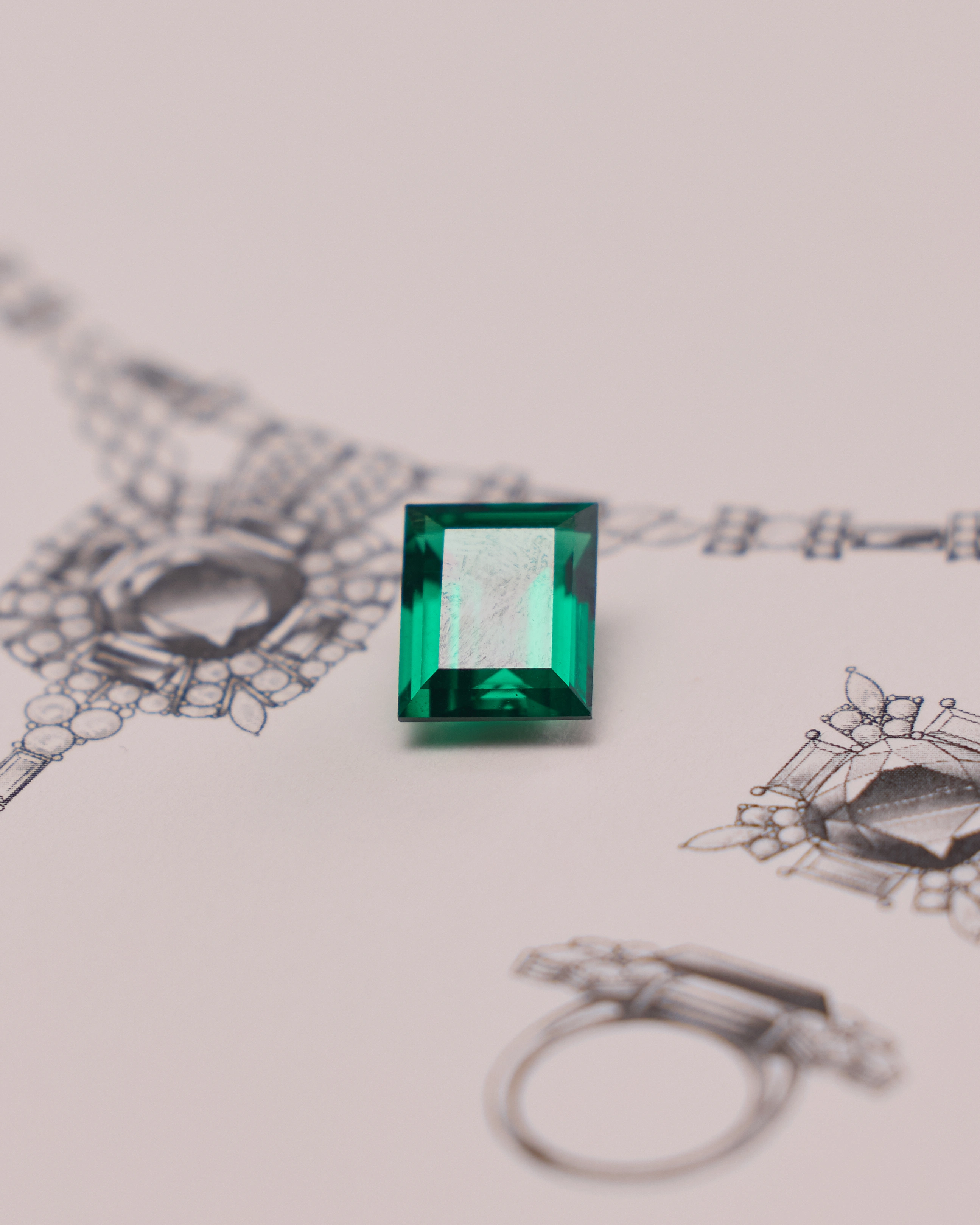Today, the fashion jewelry industry is undergoing a significant transformation. Lab-grown gemstones are becoming increasingly prominent, not merely as substitutes but as high-potential, mainstream options. This article explores the key factors driving lab-grown gemstones to become the future of fine jewelry.
1. Physical Properties and Consistency
One of the biggest advantages of lab-grown gemstones is the control over quality and consistency during production.
Research in “Man-made Crystals: A Review of their Historic and Contemporary Context and Use” highlights that the technology for growing synthetic crystals has advanced rapidly, making the differences between natural and lab-grown crystals increasingly difficult to detect.
(ResearchGate)
For gemstones like lab-grown diamonds, technologies such as Chemical Vapor Deposition (CVD) or Microwave Plasma-Assisted CVD (MPACVD) are being applied to produce high-quality diamonds at scale.
(arXiv)
By controlling factors like temperature, pressure, and raw material purity, manufacturers can produce gemstones with chemical compositions and crystal structures closely resembling those of natural stones.
2. Cost Efficiency and Production Scale
As lab-grown gemstone technologies advance, the ability to mass-produce these gems has significantly reduced unit costs.
The report “Lab-Grown Diamonds: Reshaping the Gemstone Market” notes that CVD and HPHT diamond production substantially lowers production costs, allowing lab-grown diamonds to be priced more affordably.
(IOSR Journals)
BriteCo reports that in the U.S., consumers increasingly choose lab-grown diamonds, with some data showing that 45% of engagement ring sales involve lab-grown stones due to lower prices and better value.
(BriteCo)
Industry reports like US Jewelry Industry – Still Sparkling highlight the growth of synthetic gemstones alongside sustainability trends, encouraging manufacturers to use materials with lower environmental impact.
(Greenwich Capital Group)
With lower costs and scalable production, lab-grown gemstones can reach a wider market than natural gemstones.
3. Sustainability and Ethics
Environmental and ethical considerations are becoming key factors in modern consumer purchasing decisions.
Millennials and Gen Z particularly value sourcing, environmental friendliness, and ethical production. Research in “Consumer Behavior Toward Lab-Grown and Natural Diamonds” shows that ethical and sustainable factors play a crucial role in consumer confidence when choosing lab-grown diamonds.
(IKR Publishers)
The Lab-Grown Diamonds: Reshaping the Gemstone Market report emphasizes that lab-grown diamonds are often marketed as conflict-free and environmentally responsible, appealing to consumers seeking cleaner products.
(IOSR Journals)
Industry researchers note that many jewelry companies now highlight responsible production in their marketing strategies to attract eco-conscious buyers and reduce resource extraction, making sustainability a strong selling point.
(Rapaport)
These trends support lab-grown gemstones as a prominent choice in the future fine jewelry market.
4. Consumer Perception and Market Behavior
Despite advantages in quality, price, and sustainability, success in the fine jewelry market depends on consumer acceptance.
Research in “The Future Star in Gems? Can Lab-Grown Diamonds Add Value to Luxury Brands?” indicates that while lab-grown diamonds have the same crystal structure as natural diamonds, some consumers still perceive them as inauthentic and lacking collectible value, especially in the luxury segment.
(jogg.cug.edu.cn)
The study Consumer Behavior Toward Lab-Grown and Natural Diamonds highlights a knowledge gap among consumers regarding environmental impact and quality differences between natural and lab-grown diamonds, which requires education and transparent communication to build trust.
(IKR Publishers)
BCG’s report The Future of the Natural Diamond Industry emphasizes that future strategies should clearly differentiate natural diamonds as rare and prestigious from lab-grown diamonds positioned as luxury everyday options.
(BCG)
Effective branding and communication strategies are therefore critical. When done well, lab-grown gemstones can position themselves as a premium choice, not just an economical alternative.
5. Trends and Future Growth
Industry and research reports indicate several trends pointing to the growing role of lab-grown gemstones.
- Rapidly increasing market share: Lab-grown diamonds are capturing more market share, especially in engagement rings and general jewelry.
(BriteCo, Rapaport) - Color variety and customization: Advanced production technologies allow the creation of special colors and designs tailored to customer preferences.
(BriteCo) - Market segmentation: In the long term, natural and lab-grown diamonds may occupy distinct market paths. Natural diamonds will remain collectibles and status symbols, while lab-grown diamonds will become luxury everyday or fashion fine jewelry.
(BCG, Rapaport) - Efficient and scalable production technology: Research on MPACVD demonstrates the potential to produce high-quality diamonds on a larger scale with less energy and materials.
(arXiv) - Advanced gem analysis and verification: Deep learning and AI applications can identify gemstone origin and treatment, ensuring buyers’ confidence in the authenticity of synthetic stones.
(arXiv)
Conclusion: Why Lab-Grown Gemstones Are the Future of Fine Jewelry
- Near-natural quality: Controlled laboratory processes yield gemstones with crystal structures closely resembling natural stones.
- Lower costs and scalable production: More accessible pricing and the ability to meet broad market demand.
- Sustainability: Reduced environmental impact and ethical concerns compared to mining.
- Evolving consumer acceptance: Especially among younger generations who value ethics and meaningful luxury.
- Technological and innovative support: From efficient production to AI-based gem analysis.
Lab-grown gemstones are not just an alternative; they are shaping the next era of fine jewelry.
.avif)
